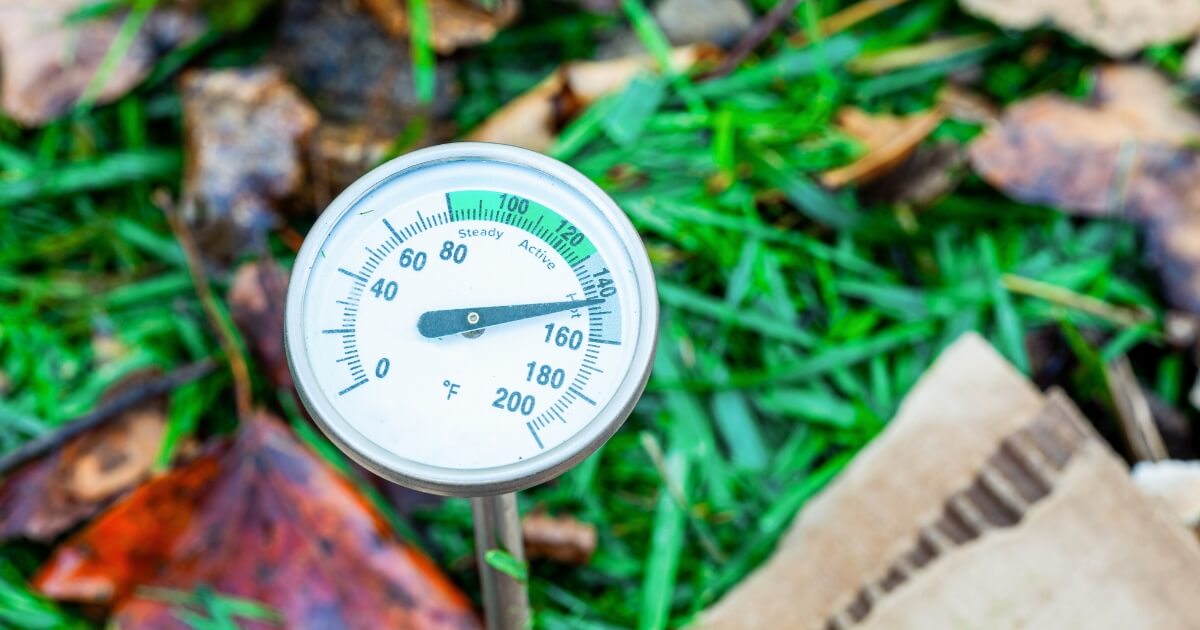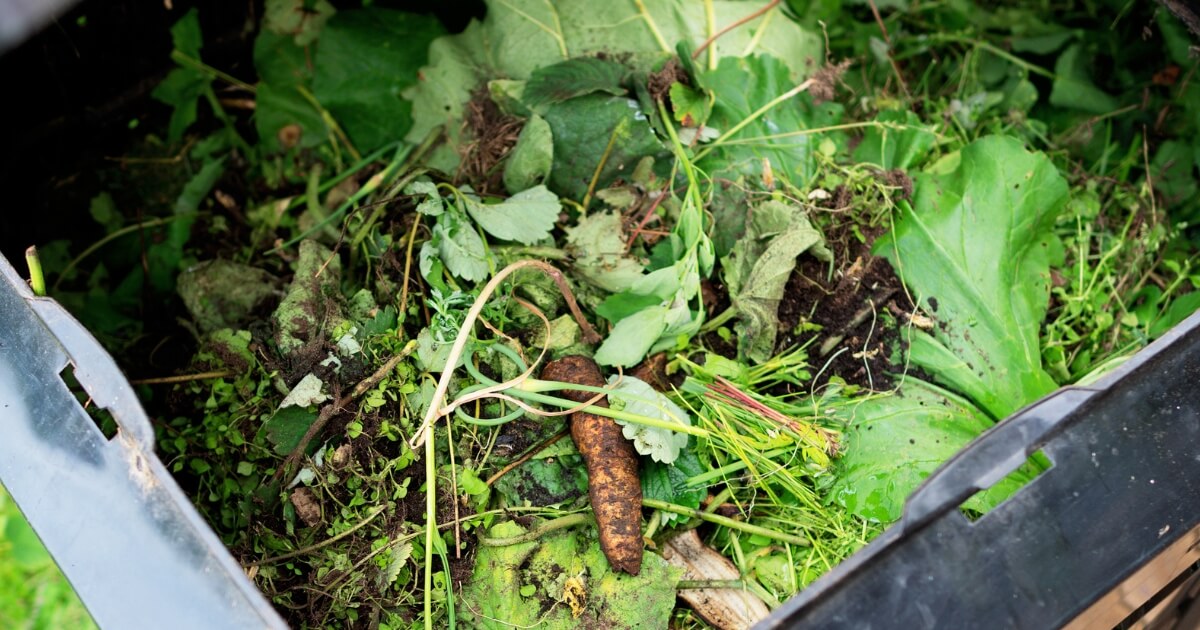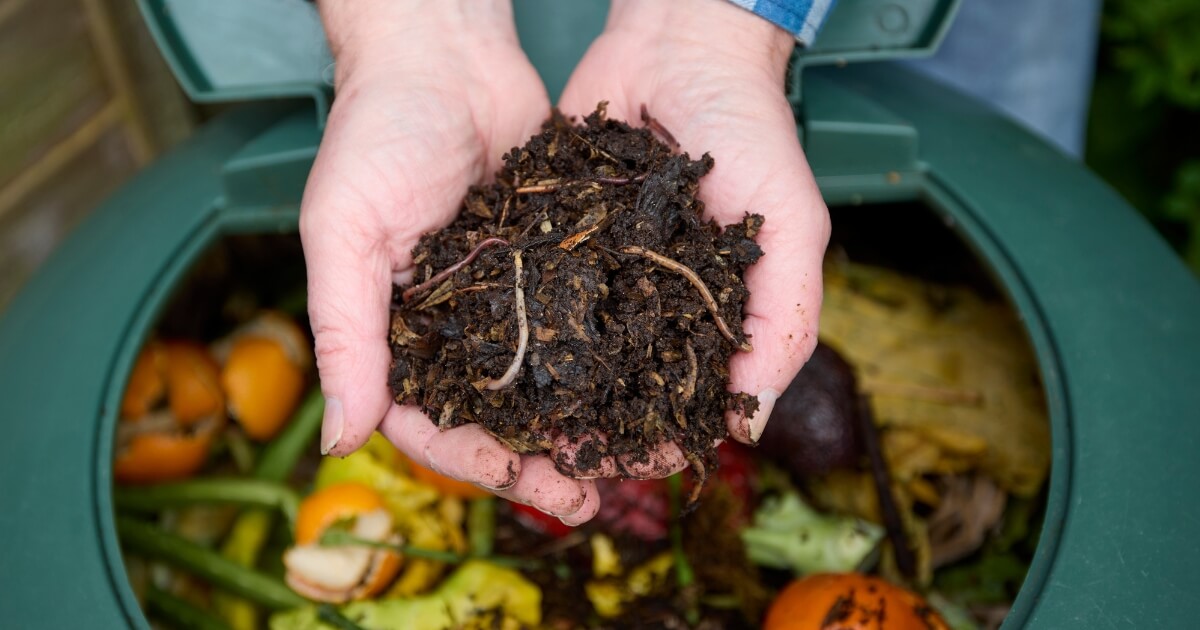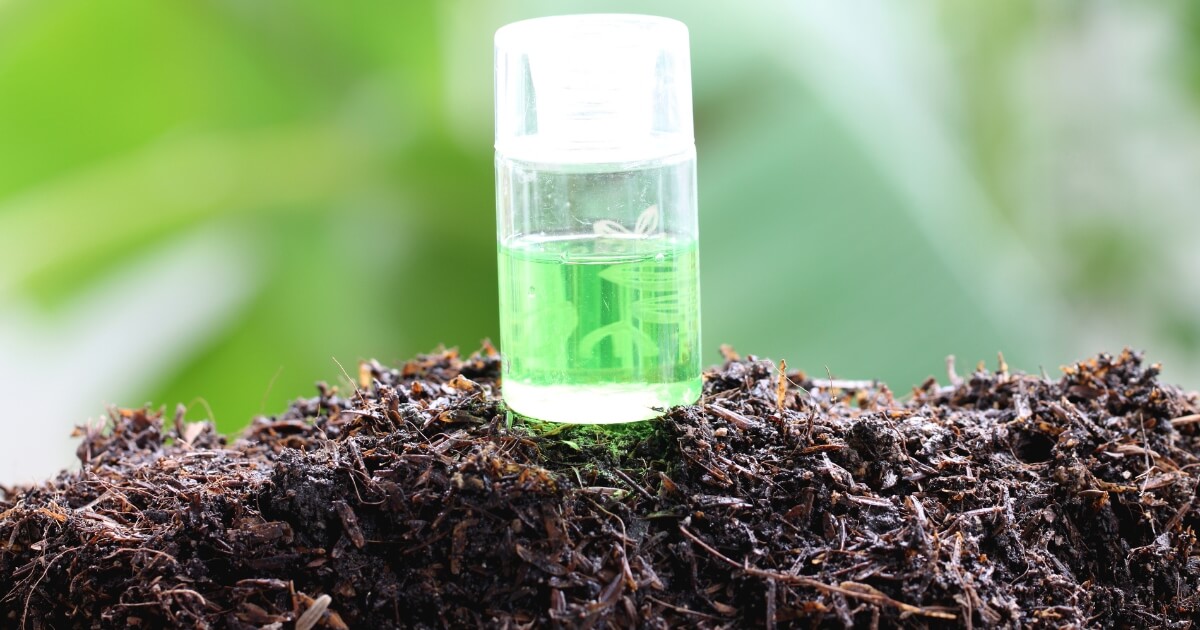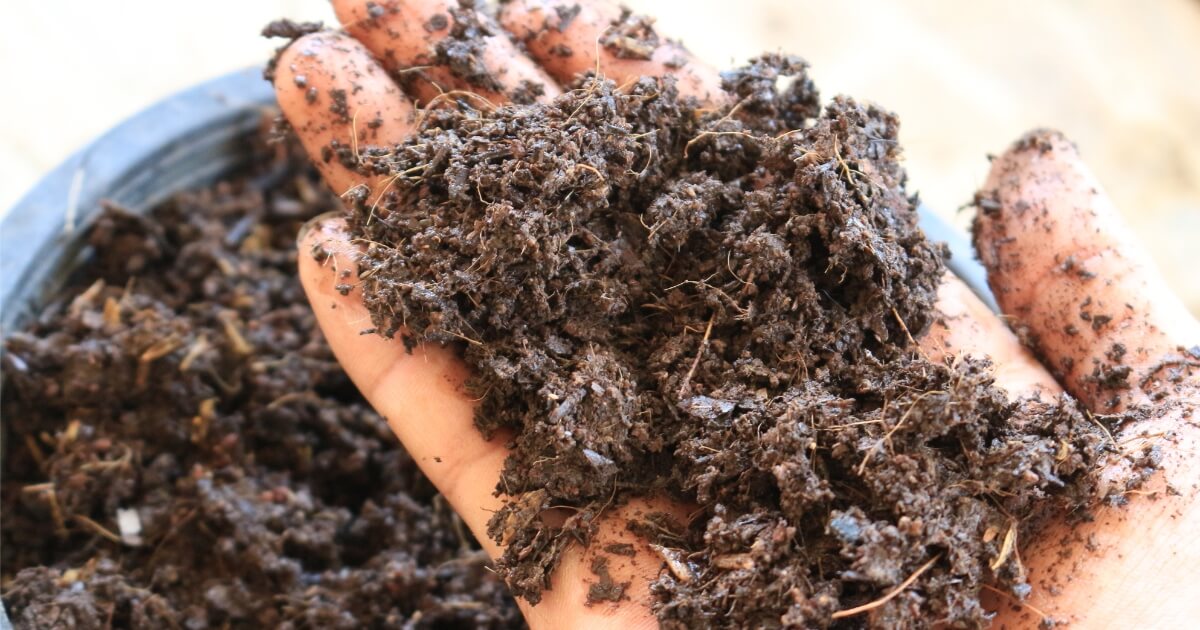Bagging up grass clippings is a hassle most homeowners would love to avoid.
Is there a better way to deal with clippings after mowing your lawn?
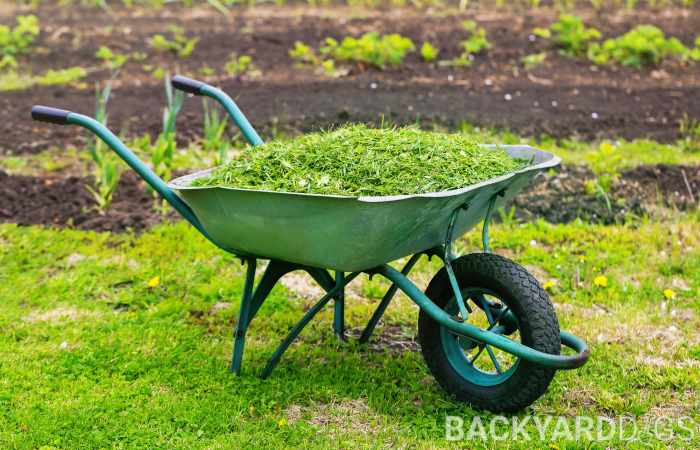
Yes. Turn those clippings into compost!
Read along to learn how to compost grass clippings fast and find the answers to some frequently asked questions. Soon you’ll know how to reap the benefits of recycling grass clippings instead of adding to already overflowing landfills.
How To Compost Grass Clippings
The best way to deal with grass clippings is to compost them.
Follow these steps to corral grass clippings and turn them into a rich soil medium for planter beds, vegetable gardens, flower containers, and indoor plants.
Step 1 – Collect And Stack The Grass Clippings
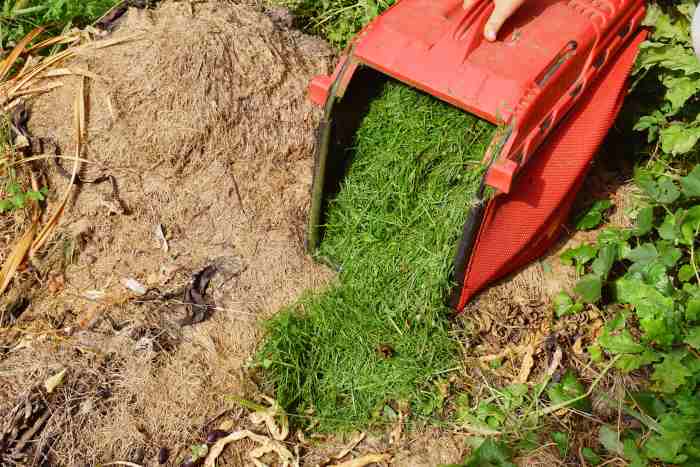
Rake or bag up your lawn clippings and pile them up in a convenient location in your yard.
Form the grass clippings into a tall stack. Don’t spread them out, since a wide, flat pile won’t generate the heat necessary for a quick break down of the material.
Ideally, your pile will be around the same height as the width. For example, a three-foot-square accumulation should also be three feet tall.
The key to quick composting is to reach a high internal temperature, and this type of stack accomplishes that goal.
Step 2 – Add In Carbon-Based Materials
To speed up the composting of grass clippings, consider mixing brown ingredients into your pile.
The carbon in brown ingredients combines with the nitrogen inside fresh grass clippings, to generate more heat and faster turn-around time for complete compost.
You can stick solely with grass clippings if you wish, but the process will take a bit longer.
The outer layer of grass on your pile will dry out in a matter of days. At this point, the “green” material becomes “brown” and will mix into the pile as you tend to the compost.
My yard has an abundance of small dried leaves that get sucked into the bag as I mow. I find this is the perfect no-brainer blend that I dump into my compost pile for speedy results.
What about bin composting?
You may wonder how to handle the process when grass clippings are placed in a bin composter.
Related | Best Compost Tumblers
The size and moisture content within a bin enclosure alter the ability for composting grass clippings fast.
It’s best to add in brown material with fresh clippings to keep the moisture level in check and decomposition process running smoothly.
Step 3 – Water The Clippings
Keeping compost ingredients moist is critical for heat generation, and helping the microbes inside the pile stay happy and healthy.
Lightly douse your pile with water after you add more grass clippings. Spray down the mound if you go several days without rain.
Do not drench the pile, as everyone knows how stinky wet grass can be. The anaerobic conditions of wet, dense clippings trap the nitrogen and convert it into ammonia, which smells!
Moist is best for the inside of your compost pile, even if the outer layer is dry from sun and wind exposure.
Step 4 – Turn The Pile
If you want fast compost from your grass clippings, turn the pile every few days.
The best way to turn compost is to use a shovel or pitchfork. Dig into the center of the pile and flip it over to an area directly next to the current heap.
As you turn/move the stack, incorporate the outer, dry layers into the center of the pile. Keep the material fluffy. You want as many air pockets as possible!
TIP: Once you have a pile of beautiful composted grass clippings, don’t let rain and sun deplete the nutrients. The longer you leave compost uncovered compost, the more nutrients leach out.
Spread out the compost immediately or cover the pile with a waterproof tarp.
How Long Does It Take For Grass Clippings To Decompose?
When done right, under perfect conditions, composted grass clippings should decompose in less than three weeks.
Of course, perfection when composting is nearly impossible. Expect most grass-clipping compost piles to take between 4-8 weeks.
Grass clippings are already thin and short, which expedites the decomposition process. You can help the matter even more by cutting your lawn more often, so the clippings are shorter when you add them to your pile.
No time or space for a compost pile?
For those looking for the benefits of recycling their grass clippings, but don’t want to deal with a compost pile, use a mulching mower without the collection bag.
Leave the clippings on your lawn and let them break down on their own.
Doing this only works if you cut your lawn frequently, and your grass is less dense, so the cuttings settle to the ground.
Do take caution, since mowing a thick lawn can leave a large number of clippings on top of the turf, which leads to damage like brown patches.
If you are lucky enough to have a dense lawn, it’s best to bag grass clippings and remove them to a compost pile.
Mixing Grass Clippings Into Soil
Dispose of your grass clippings right away by mixing them into the soil around your property.
A good routine is to spread a thin layer of clippings over the ground, then work them into the top six or eight inches of soil with a rake.
If you own a rototiller, you can incorporate grass clippings even faster. The rototiller chops and turns the soil more efficiently so that you can mix in even more grass clippings over hand tilling.
Related | Rototilling Guide
Using grass clippings around the base of plantings and working them in with a hand trowel is a fantastic way to improve soil quality.
Go ahead and leave an inch-deep layer of grass-clipping mulch around the plants. Keep the layer thin to prevent the growth of mildew, which could harm the plants.
Benefits of Using Grass Clippings
- There are many benefits to reusing grass clippings like:
- Helping the environment.
- Many communities have quit curbside pick-up of grass clippings.
Landfills cannot handle the sheer amount of yard waste that takes up, on average, nearly 20 percent of available space. Recycling grass clippings adds minerals straight back to your land and reduces stress on your local landfill.
Expedite lawn maintenance.
While it seems counterintuitive to save time by mowing your lawn more often, studies show that it takes much less time to mow a lawn when you are only cutting off an inch or so.
When you let the clippings remain on the grass, you save even more time throughout the mowing season.
Cutting less of the blade is also less stressful on the grass, which results in healthier growth.
Save water.
Using grass clippings as compost or leaving them on the lawn as you mow both improve soil structure, which increases water retention so you can water less frequently.
Reduce the need for fertilizer.
Composting grass clippings and recycling them back to your lawn adds a good helping of nitrogen, potassium, and phosphorous to your lawn, which means spending less on fertilizer.
In Summary
Composting with grass clippings is a smart way to recycle an otherwise annoying amount of yard debris quickly. It’s super easy to reduce landfill waste and increase the health and beauty of your yard.
Related | Best Way To Clear Brush
Take advantage of composting your grass clippings so that you can enjoy the reward of an endless supply of free compost year after year!

